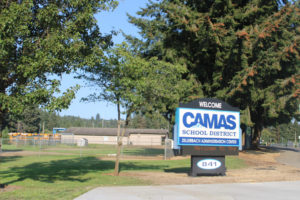The Camas School Board this week approved a $132 million 2021-22 budget that includes using $6.5 million out of fund balances to make up for revenue shortfalls caused by the ongoing COVID-19 pandemic, decreased student enrollment and COVID-19 relief funds that were disproportionately low compared to similarly sized school districts in Washington.
“The 2020-21 fiscal year was perhaps the most uncertain in the history of K-12 education,” Jasen McEathron, the district’s director of business services, told the Camas School Board on Monday, Aug. 23. “The COVID-driven changes in policy and educational practices made 2020-21 extremely difficult to forecast.”
The school district also has had “unprecedented enrollment volatility” since the start of the pandemic in 2020, McEathron added.
“We experienced a 6- to 7-percent enrollment loss this past year,” McEathron said.
The 2021-22 school district budget is based on an assumption that the district will recover roughly half of that lost enrollment.
“We felt as though that was a conservative approach to take,” McEathron said, adding that the district’s enrollment losses “were consistent” with other districts in the region and throughout Washington state.


